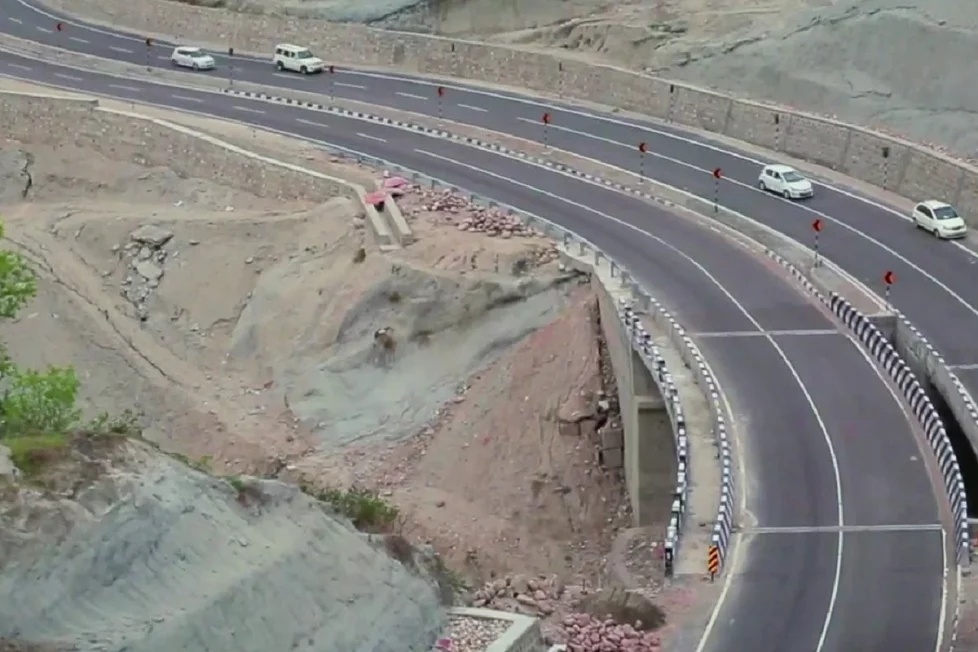Road development in J-K accelerates at a historic rate following the repeal of Article 370.


After Article 370 was repealed in the erstwhile state of Jammu and Kashmir on August 5, 2019, the amount of road development jumped from 6.5 km per day to 20.6 kilometers per day. At this point, Jammu and Kashmir’s roadways reach 41,141 kilometers in length.
As per reports, the speed at which roads are being macadamized and the lengthening of the roads is an example of how Jammu and Kashmir have changed over the last three years. According to government statistics, the number of kilometers of roads in Jammu and Kashmir has climbed to 41,141, and 74% of them are now blacktop, up from 66% in 2019.
A target of 5,900 kilometers under the pothole-free road initiative was set for 2021–2022, of which 4,600 kilometers of road length have been made pothole-free so far.
The Pradhan Mantri Gram Sadak Yojana (PMGSY) road length was 3,284 km in 2021–2022, and by implementing 427 schemes in a year, the PWD connected 114 habitations through road networks, placing the Union Territory of Jammu and Kashmir among the top three at the national level for road length construction per year.
Since 2019, Jammu and Kashmir have improved their performance in terms of the length of roads constructed annually, moving up the rankings from 12th to 9th in 2019–20 and then to third for the two years immediately following, 2020–21 and 2021–2022.
According to the 2011 census, all settlements with a population of more than 1,000 have been given access to roads. the construction of a road system to connect 500 homes.
Massive reforms have been made to PWD over the last three years, including the implementation of the J&K PWD Engineering Manual 2021, the creation of the Road Maintenance Policy-2021, the J&K Macadamization (execution and quality control) and DLP Enforcement Manual, the SOP for routine departmental actions, the introduction of an online management monitoring accounting system, the introduction of a two-party quality control mechanism, the introduction of the certain mobile apps.
According to the official data, the Public Works Department resolved 356 complaints on Meri Sadak and 32 complaints on CPGRAMS.
J&K was without effective road connectivity for 70 years, which is regrettable but true. In the past three years, the Srinagar-Jammu National Highway has been renovated, and it now only takes 6 to 7 hours to travel between the two capital cities of J&K. Previously, it took 12 to 14 hours to travel the 300 km distance between Srinagar and Jammu.
The so-called special status of J&K served as the main barrier to its development. The elimination of Article 370 caused the average man to gain importance.
J&K has resembled other regions of the nation over the previous three years. The Himalayan region’s inhabitants are receiving their just desserts. They were prevented from entering the nation under the pretense of “special status” by their supposed “Messiahs,” who ruled the former state for 70 years but fell short of their promises.
Politicians engaged the public from 1947 to 2019 by announcing policies and chanting catchphrases. Any region’s lifeline is proper road connectivity, and J&K is getting closer to having the finest possible connectivity as of August 5, 2019.
DISCLAIMER: The author is solely responsible for the views expressed in this article. The author carries the responsibility for citing and/or licensing of images utilized within the text.

